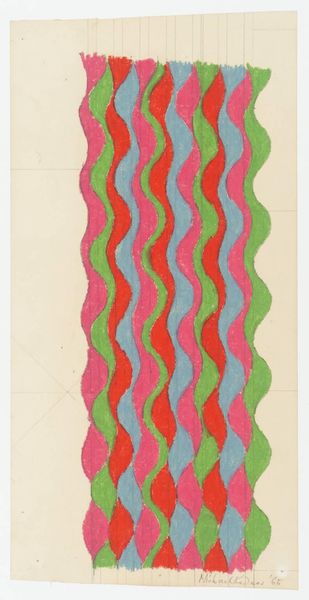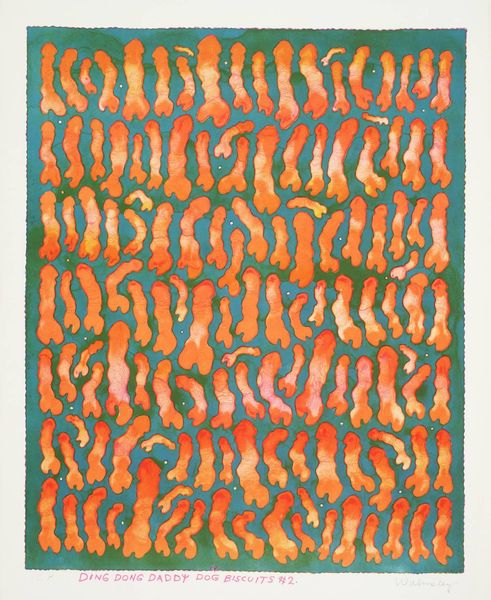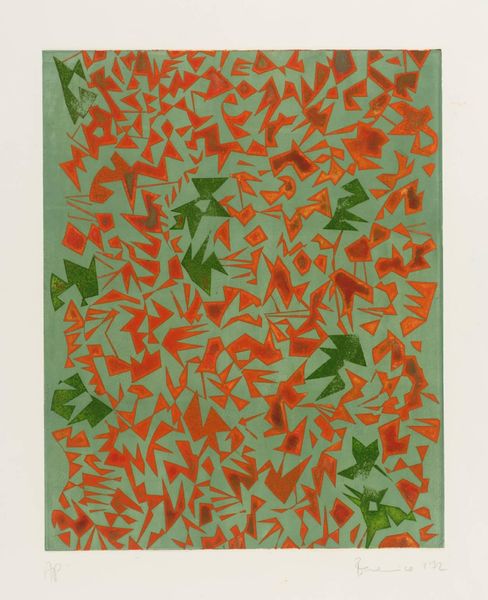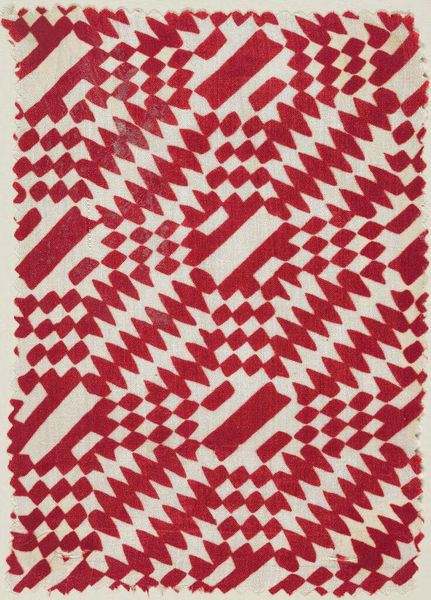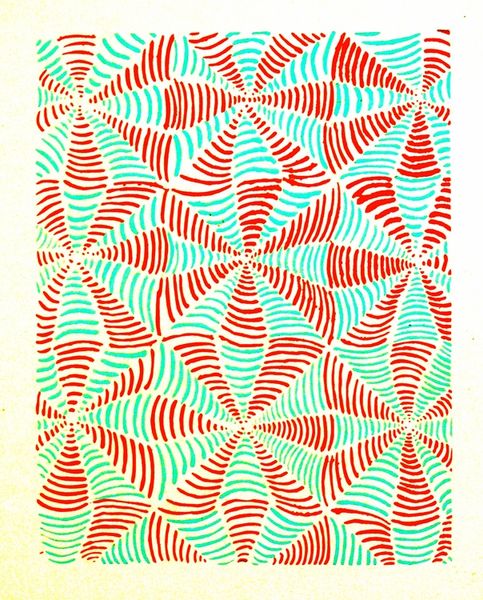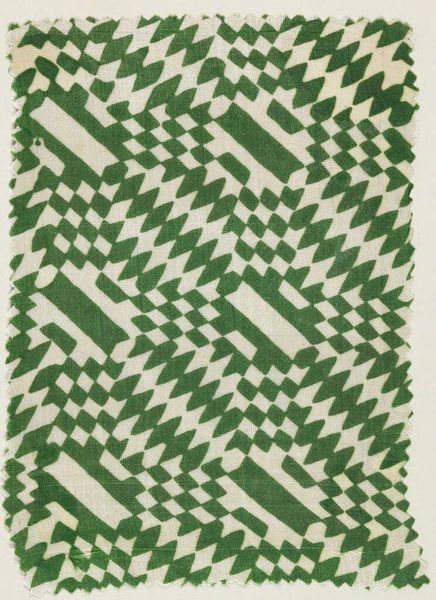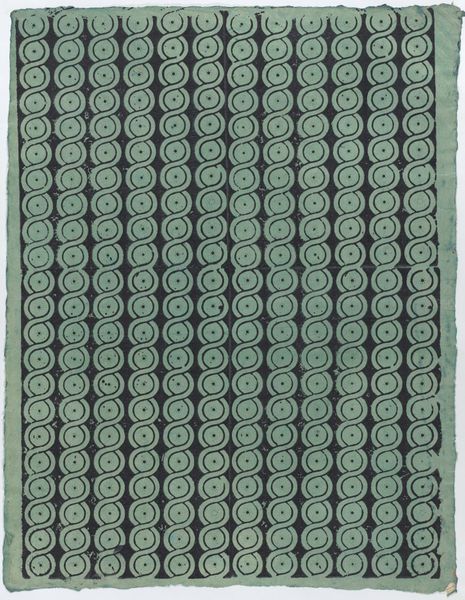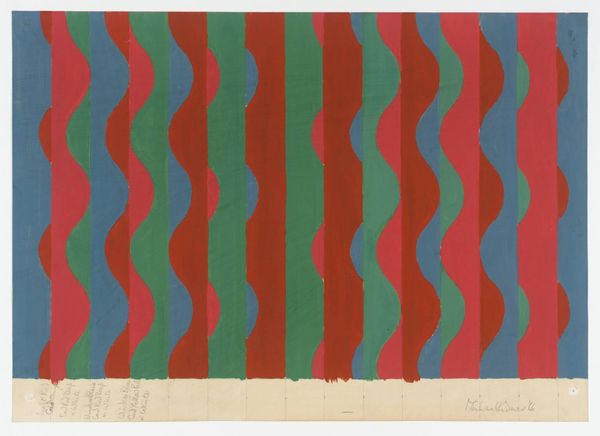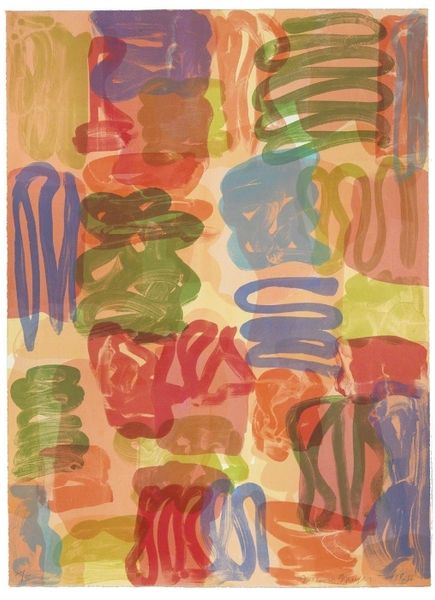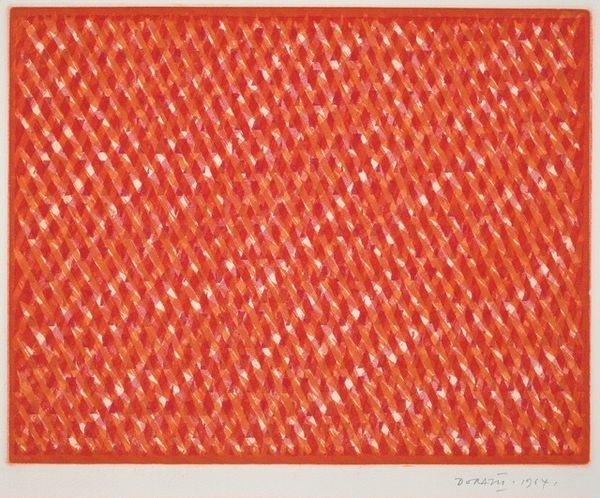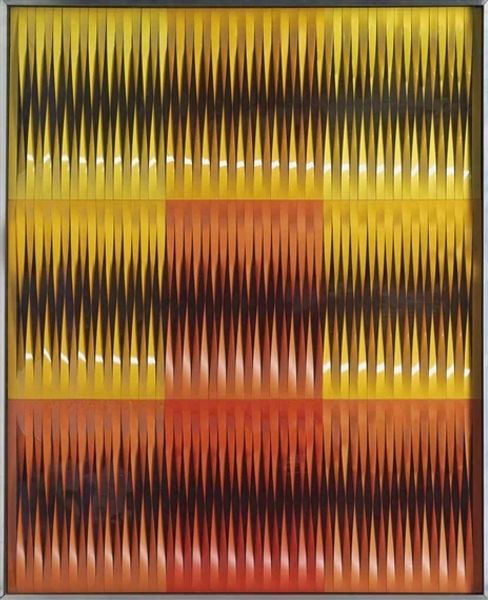
Dimensions: support: 558 x 290 mm
Copyright: © The estate of Michael Kidner | CC-BY-NC-ND 4.0 DEED, Photo: Tate
Editor: So, this is Michael Kidner's "Phased Brown and Green Wave" from the Tate. I find the repetition of these wavy lines quite mesmerizing. How do you see this work fitting into its historical context? Curator: Kidner's piece reflects a post-war interest in Op Art and systems-based approaches. The strategic use of wave patterns challenges traditional artistic expression by embracing mathematical principles. Editor: It seems so simple, yet complicated. Do you think this type of geometric abstraction had any specific social or political intentions? Curator: The move towards abstraction was, for some artists, a rejection of representational art that had been used for propaganda. It became a way to explore universal visual languages outside of ideology. What does it mean to you? Editor: I see now that it is more than just pattern and color! Thanks for your insight. Curator: My pleasure! It is fascinating to explore art through a historical lens.
Comments
tate 6 months ago
⋮
http://www.tate.org.uk/art/artworks/kidner-phased-brown-and-green-wave-t07786
Join the conversation
Join millions of artists and users on Artera today and experience the ultimate creative platform.
tate 6 months ago
⋮
With Phased Brown and Green Wave, 1960-4, Michael Kidner attempts to create abstract optical illusions through the repetition of vertical wave shapes in contrasting colours which overlap each other.
